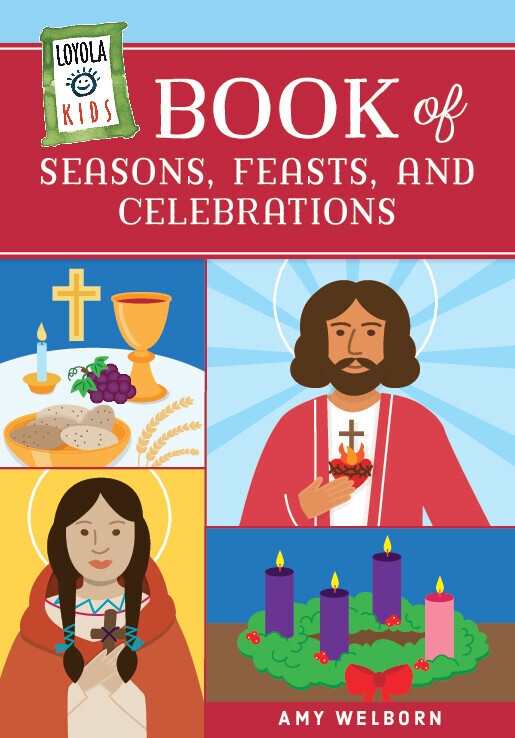Loyola Kids Book of Seasons, Feasts, and Celebrations
Loyola Kids Book of Seasons, Feasts, and Celebrations ably explains the inner workings of the Catholic liturgical year.
Amy Welborn’s religious book Loyola Kids Book of Seasons, Feasts, and Celebrations presents and explains various Catholic traditions to children.
Introduced to parents and teachers as a helpful teaching tool, sans activities like puzzles and coloring pages, this book explains the reasons behind a bevy of religious traditions. It follows the steps of the liturgical year, including which biblical verses are read and what can be seen, sung, heard, and done for each holiday. Its language is casual, and its work is complemented by cute drawings of saints and various traditional tools; the images are used to illustrate and offer context about each tradition that’s covered. For example, alongside the description of Advent, a clear drawing of an Advent wreath is pictured, along with a description of its uses.
The book explains what may be witnessed during each holiday, too, and what those particular elements mean in terms of their significance or symbolism. Even colors have a deeper meaning, the book says, and these can change depending on the holiday season. For example, during Advent, purple symbolizes repentance; seen during Lent, violet symbolizes paying penance for sins. Explaining the liturgical meanings behind white, red, and green, too, the book deepens its audience’s sense of the traditions.
Helpful asides in the text share more history about Catholic traditions. For example, the book notes that because Jesus and his first followers were Jewish, the observance of the Sabbath (from Friday night to Saturday night) fed into Mass being observed on a set-aside day (on Sundays). And the origins of Catholic traditions from around the world are covered as well: St. Nicholas, the book notes, was a bishop from Turkey who was known for his generosity and giving to the poor.
The book’s brief last section glimpses at a handful of saints who are celebrated throughout the year. Though some noted saints aren’t explained as well as others (defended with the assertion that their respective stories weren’t recorded at length), intriguing information is shared: for example, the March 19 celebration of St. Joseph (the “foster father” of Jesus) is tied to the European celebration of Father’s Day. There are cartoon depictions of the saints as well, adding a level of playfulness to the text.
Loyola Kids Book of Seasons, Feasts, and Celebrations ably explains the inner workings of the Catholic liturgical year.
Reviewed by
Erin Nesbit
Disclosure: This article is not an endorsement, but a review. The publisher of this book provided free copies of the book and paid a small fee to have their book reviewed by a professional reviewer. Foreword Reviews and Clarion Reviews make no guarantee that the publisher will receive a positive review. Foreword Magazine, Inc. is disclosing this in accordance with the Federal Trade Commission’s 16 CFR, Part 255.

